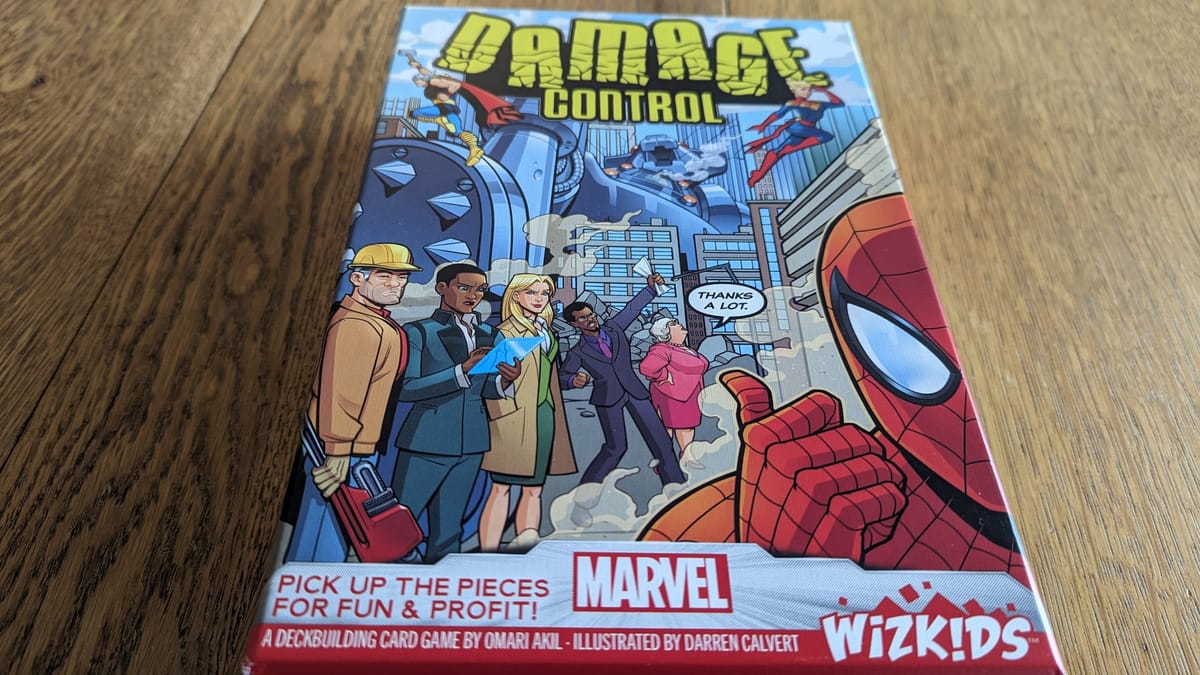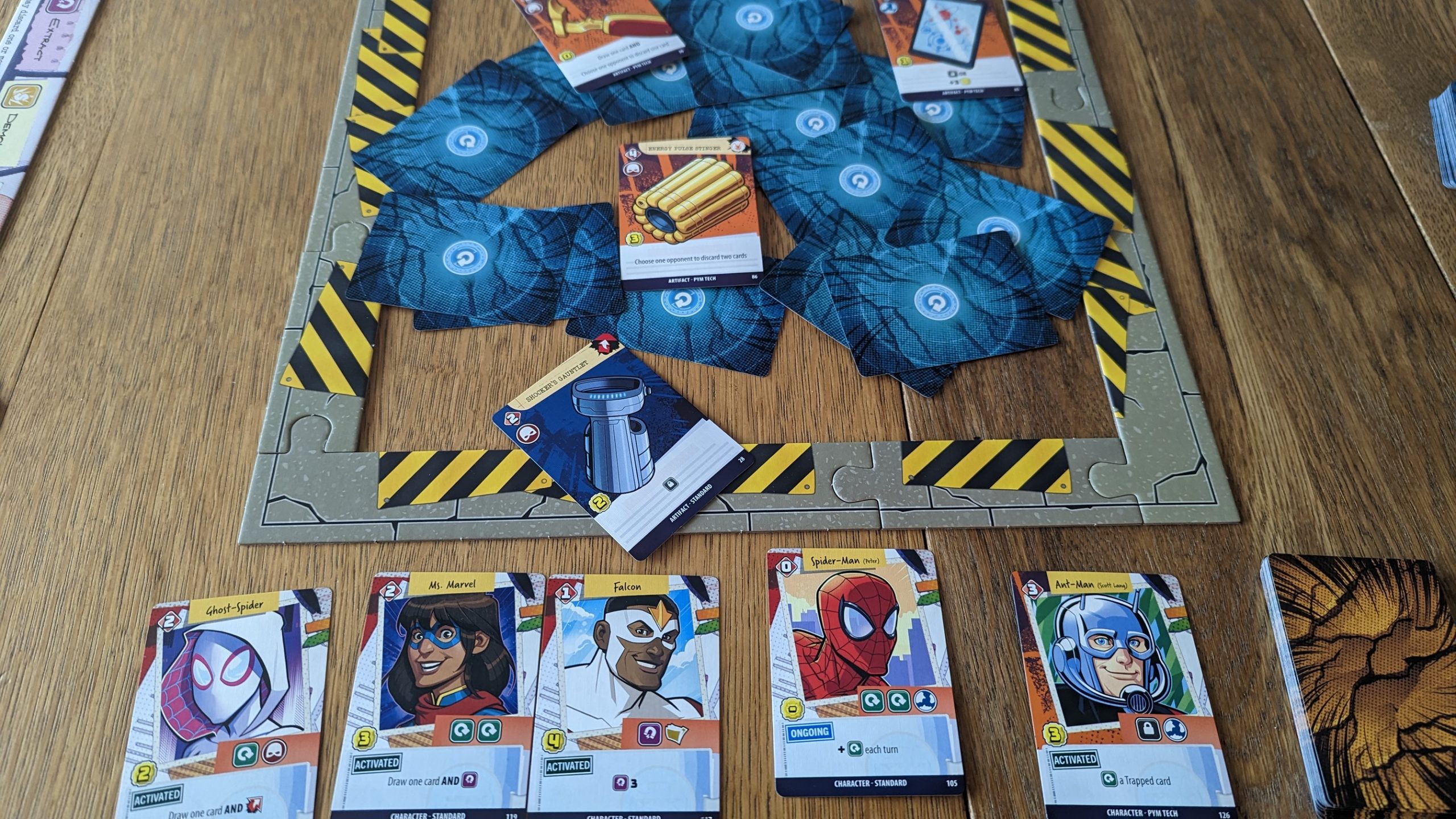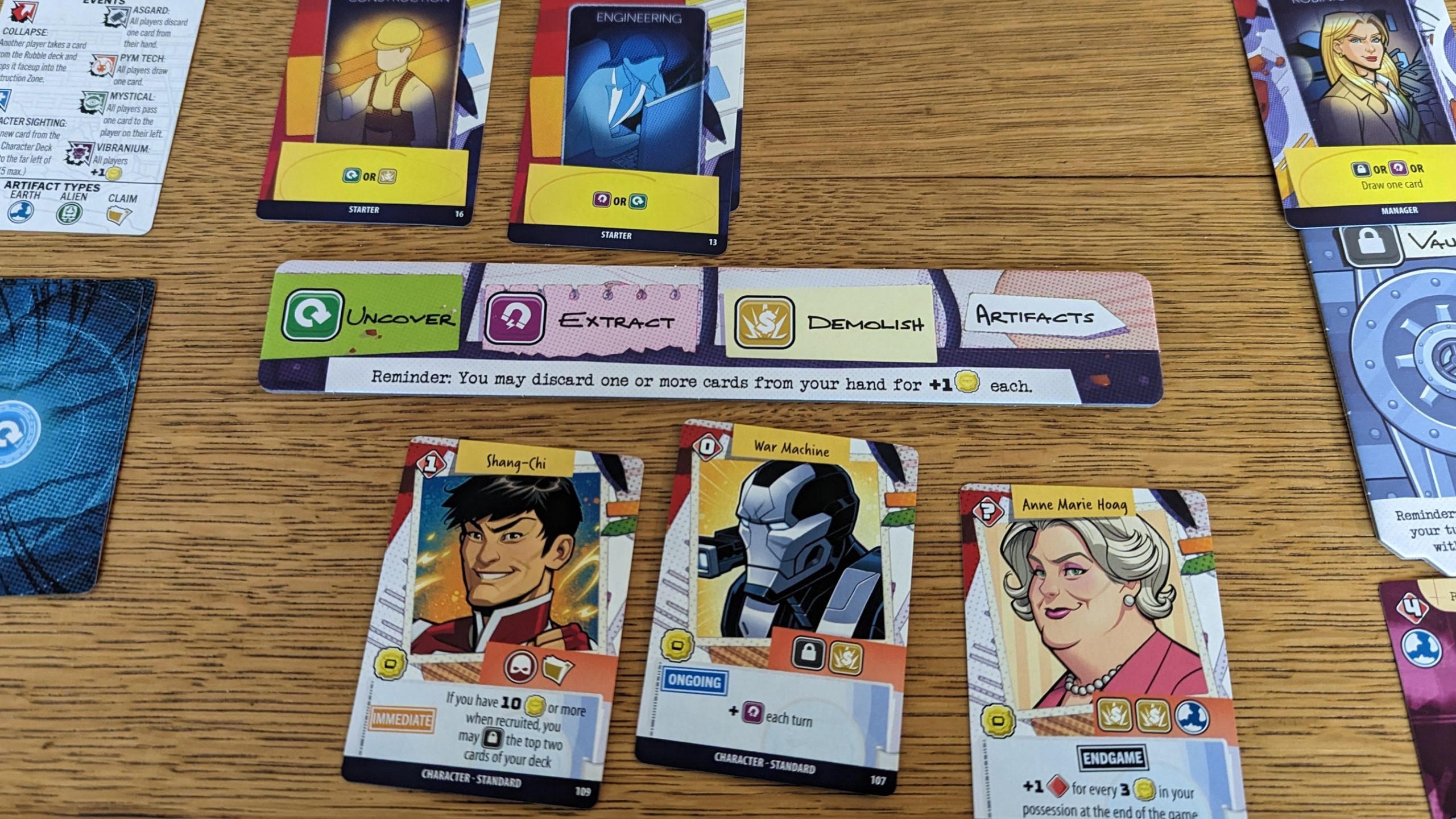
I’m pretty over pure deck builders. I’ve been playing them since the OGs Dominion, Ascension, and Thunderstone came out in the late 2000’s, and as a result, I’ve developed an instinct for how to play them optimally. With the majority of deck building innovation integrating it as a mechanic in a larger game, when I’m playing a pure deck builder, very seldom am I actually faced with interesting decisions, which means I generally don’t choose to play them when given a choice nowadays.
Similarly, I have a general distaste for Marvel. I’m not really a comics guy, so my only interaction with the IP has been the MCU, and since superheroes have usurped slashers as the poster child movie genre of creative bankruptcy, when you add in the depiction of American military intervention as a moral good with the only opposition being either misguided or outright villainous, it’s just not my bag.
I say all this not to declare anyone that likes the two wrong, but to preface why when Damage Control wound up on our review inbox, I ignored it for a hot minute, hoping someone else would pick it up. But when it stayed put, I reluctantly gave it a look, and uh, it’s neat, I guess? It’s certainly got some cool things going on under the hood. Instead of the bog-standard play cards to get resources to buy cards from the market into your discard pile to buy victory points or damage your opponents that is starting to show its age and make games feel like you’re spending the first handful of rounds just getting into gear, Damage Control approaches deck building in its own way that threw my instincts out of phase. Each starter card can be played for one of the basic actions: demolish lets you junk a face-up card for influence, uncover lets you flip a card whose circle icon doesn’t have another card obfuscating it, triggering any event on the card. Finally, extract simply adds any face-up card to your hand and vaulting removes cards in your hand from circulation so you can actually score them.

Over the course of your turn, you’re going to be playing cards and slotting them in the space for the action you resolved, continuously deciding between playing an artifact you just picked up for its ability and scoring it for points. Every time you play an artifact, you’re not only spending influence that converts into endgame points, but also gambling that you’ll be able to cycle through your deck again before the endgame is triggered. How the vaulting mechanic works means you’re never forced through the motions of thinning out your starter cards- they’re powerful enough as is, what you should be focusing on is recovering and vaulting high point artifacts.
Now we get to the end of your turn, where you can spend cards you played to recruit characters from the rotating market. Each character has their own array of actions you need to spend in order to pick them up and provide a variable mixture of points and powers, and deciding which character falls into your game plan or if it’s worth it to make a detour this round to pick up someone particularly juicy provides another snappy decision point. Stuff like this is where Damage Control shines – when it’s hitting on all or most cylinders, it’s a great filler+ length game that offers a fresh take on a stale genre.

The implication there is that there’s a noticeable amount of time that Damage Control doesn’t run smoothly, which means it’s time for me to talk about the theme decks. Damage Control comes with four theme decks that contain market and character cards – you’re supposed to pick two and shuffle their cards into the market and character decks before every game. Particularly perceptive readers have already picked up on the issue here, where any addition to set up and tear down time to a light quick game has really got an uphill battle to justify its existence, since nobody wants to spend five minutes setting up and sorting decks on either side of a twenty minute game. The separate decks are another case of big hits and misses: pym ratchets the snappy pace up to breakneck speeds with its powerful effects and event that lets everyone draw a card. Outstanding, 10/10. Vibranium incentivizes the greed of playing artifacts instead of vaulting them – vibranium artifacts have additional triggers if you’ve played multiple on your turn, and its event doles out the influence you need to do so. Mystic is perfectly fine, adding a set collection element to scoring its vaulted artifacts and a mildly chaotic pass a card to your neighbor event – serviceable, but brought down because using it means excluding one of the better themes. Asgard is a total flop that really made me question the purpose of themes other than the obvious expansion implications, as it’s overloaded by feel bad take that effects and an event that forces everyone to discard a card, slowing the game down to a standstill as everyone’s forced to do almost nothing for a round while simultaneously not advancing the endgame conditions. Honestly, my copy is going to be permanently set up with pym and vibranium, but I can’t ignore that the way this game is packaged, people are going to wind up playing with the Asgard disaster and adding set up and tear down time changing it up every play. I’d like to see the inevitable expansions have overview cards for the theme decks like in Unfair, as then people could opt in to experiences like Asgard with forewarning. I also would have appreciated a reference chart in the rulebook with an approximate number of rounds for player count and themes, as it would really help players make better informed decisions between vaulting and playing artifacts.
Marvel: Damage Control
Good
Damage Control does some really cool stuff innovating in the stale design space of pure deck builders. Just do yourself a favor and only play with pym and vibranium.
Pros
- The pile of cards is just dumb fun
- Fresh take on an overdone genre
- Some people are Marvel fans
Cons
- Asgard needs to be Ragnarok'd
- Too long of a set up and tear down for the game's length and weight
